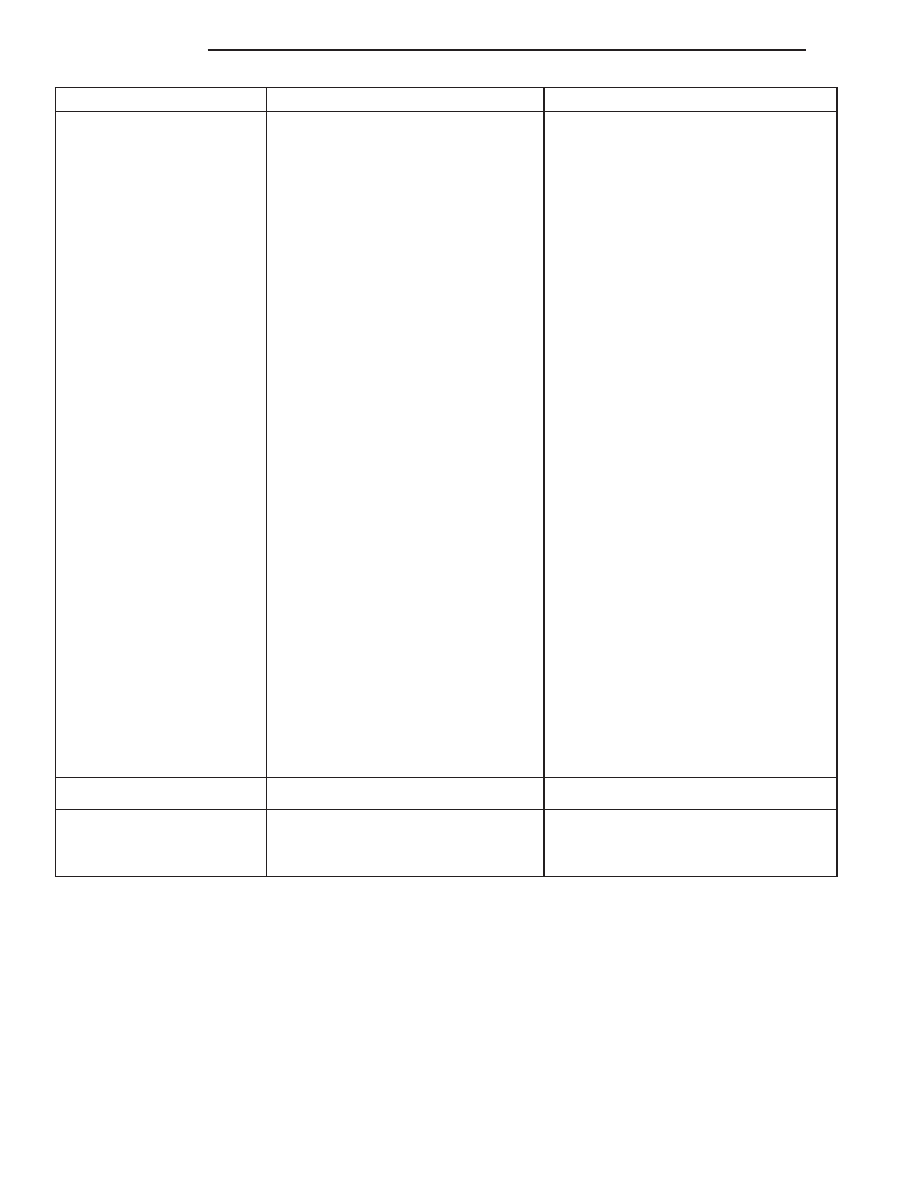Content .. 1795 1796 1797 1798 ..
Chrysler 300/300 Touring/300C, Dodge Magnum. Manual - part 1797

CONDITION
POSSIBLE CAUSES
CORRECTION
RATTLE OR CLUNK
1. Power steering gear loose on front
suspension crossmember.
1. Inspect power steering gear
mounting bolts. Replace as necessary.
Tighten bolts to specified torque. (Refer
to 19 - STEERING - SPECIFICATIONS)
2. Front suspension crossmember
mounting fasteners loose at frame.
2. Tighten front suspension
crossmember mounting fasteners to
specified torque. (Refer to 2 -
SUSPENSION/FRONT -
SPECIFICATIONS)
3. Loose tie rod (outer or inner).
3. Check tie rod pivot points for wear.
Replace worn/loose parts as required.
4. Loose lower control arm mounting
bolts at front suspension
crossmember.
4. Tighten control arm mounting bolts to
specified torque. (Refer to 2 -
SUSPENSION/FRONT -
SPECIFICATIONS)
5. Lower control arm pivot bushing
worn.
5. Replace lower control arm pivot
bushing.
6. Lower control arm tension strut
bushing worn.
6. Replace lower control arm tension
strut bushing.
7. Loose strut assembly mounting
fasteners at tower.
7. Tighten strut assembly fasteners to
specified torque. (Refer to 2 -
SUSPENSION/FRONT -
SPECIFICATIONS)
8. Power steering fluid pressure
hose touching the body of the
vehicle.
8. Adjust hose to proper position by
loosening, repositioning, and tightening
fitting to specified torque (Do not bend
tubing). (Refer to 19 - STEERING -
SPECIFICATIONS)
9. Internal power steering gear
noise.
9. Replace power steering gear.
10. Damaged front suspension
crossmember.
10. Replace front suspension
crossmember.
11. Stabilizer bar link ball joints worn.
11. Replace stabilizer bar link.
POPPING NOISE
1. Worn outer tie rod.
1. Replace outer tie rod.
CHIRP OR SQUEAL
(POWER STEERING
PUMP)
1. Loose power steering pump drive
belt.
1. Check and adjust power steering
pump drive belt to specifications.
Replace belt if worn or glazed.
19 - 6
STEERING
LX